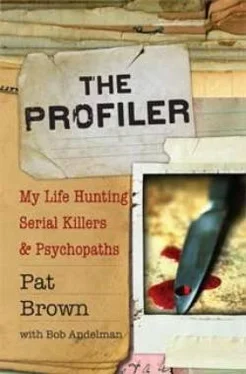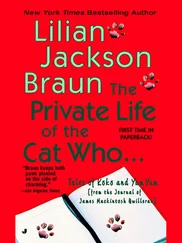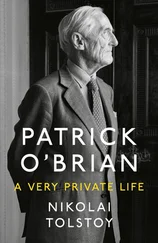The open door was a tip-off to Laurie that something was wrong; her mother compulsively locked all the doors at night.
The police told Laurie there had been a shooting at the house, but she said no, she had heard no such thing-then a horrible thought popped into her mind that her mother must have been kidnapped because her bed was empty when she went by the open door.
“He kidnapped her, he kidnapped her!” she cried out.
She showed the police to her mom’s room and then she saw her mother’s foot at the bottom of the bed.
The killer had put a small caliber gun in Doris ’s mouth and pulled the trigger, execution-style. There were burns on her tongue and the bullet locked her neck and her spine so she couldn’t move. Doris drowned in her own blood because she couldn’t move her head to the side.
Because a curtain was pulled to the side of an unlocked window, it appeared the killer might have accessed the house in this way. It is not known if the window was left unlocked or if the killer was in the home earlier and unlocked it for later entry. Because the reports and photos were not available to me, there were many missing facts that might have provided clues to exactly what happened. I would have to make do with what information I could gain by interviewing the family.
A diamond-and-sapphire necklace was initially reported as missing from the house following the murder, but that was in error. Doris ’s daughter Denise had it; her father had given it to her grandmother to give to her to hold for her wedding one day. Laurie had cash in plain view where the perpetrator could have taken it. He didn’t. Doris ’s purse was missing, but there was nothing of value in it. Therefore, this crime was unlikely to have a monetary motive.
Even though much information was unavailable, there was enough interesting information to profile this case to a reasonable extent and offer avenues of investigation that might still lead to the case being solved and an individual serving time for the crime.
Doris was what one would classify as a low-risk victim. She was married, a mother of seven children, a homemaker, and a volunteer with the ladies’ auxiliary of the fire department. She did not involve herself in any dangerous activities and did not abuse alcohol or drugs. At the time of the murder, she was at home in bed. One of her eldest daughters, Cathy, lived in an apartment across the street with her own family. Doris ’s husband, Mickey, forty-three, a paramedic and the local fire chief, was in the midst of a twenty-hour shift at a station less than a mile away from his residence. Although her husband was not at home, it would be obvious to anyone casing the place that Doris and her children were there, making her home not the best choice for burglary or stranger sexual assault. The motive for this homicide would likely have come in one of three categories:
1. Revenge. Someone Doris or her husband made angry, intentionally or unintentionally.
2. Convenience. A hit by someone who wanted her out of his way, most likely the husband.
3. A crime of passion. Someone who was emotionally connected to the victim.
The possibility of a hit by the husband was the motive that the police focused on the most, since no one knew of anyone Doris had made angry, and the killer apparently called the fire station, the location where Mickey Hoover worked. The call came in minutes after the crime was committed-from a public pay phone-so it was theorized that Mickey hired a hit man. The phone call let him know the deed was done, giving him an alibi at the time of the crime, and also allowing him to get home and prevent the children from discovering her body. If that scenario was true, it worked out well and the investigators made note of this.
Mickey was not home much. A combination of factors contributed to his long work shifts. He was said to be a flirt but there was no actual proof of extramarital affairs. His children saw him as a harsh, authoritarian figure in their lives. And not long after Doris ’s death, he began openly dating the woman who would become his second wife. She was only two years older than his eldest daughter.
In spite of these red flags, there were a number of reasons to question Mickey’s involvement in his wife’s death. One was that it was not possible for Mickey to have been the killer. He had an alibi at the fire station and his own daughter says she caught enough of a glimpse of the killer to know it was not her father. There was also a lack of a clear motive. He did not receive financial gain from her death, and although he later married a younger woman, there was no evidence he was having an affair with the woman at the time of Doris ’s death. Even if removing his wife from his life would allow him to get himself a much younger woman, a dead wife would leave him with the responsibility of raising the children alone. Mickey worked a heavy schedule and Doris bore the major responsibilities of the home and children. But Mickey’s behaviors and gossip about him did raise some eyebrows and sometimes a desire to be rid of certain roadblocks to one’s desires can be fuel for homicide. I could not eliminate Mickey purely on motive; I would need to see if the crime itself supported a hired hit on his wife.
The call to the station at 3:43 a.m. was an extremely unusual behavior, one I don’t often see from murderers. While hit men have called their employers to let them know a job is finished, they usually don’t call for help to save the victim as well. Since 911 did not yet exist in that county, one would have to call the police or fire station to get help. This call, made just minutes after the shooting of Doris Hoover, was to the fire station and received by whoever answered the phone-not to Mickey, personally. The killer didn’t really even know if Doris was dead at that point, and if he just wanted to inform Mickey of the shooting, he certainly could have waited long enough to make sure the victim had expired. It actually seemed as if the shooter might either have been trying to get paramedics to Doris or he didn’t want the kids to find her body.
One more thing: why was there no screaming, no struggle, if this was a hit man or burglar? Doris was up and awake, the light on; she was reading a book. Suddenly, a strange man appears in the door of her bedroom and Doris just stands there and lets him come up to her and put a gun in her mouth? I doubt it. Someone had to get near her, with her consent, someone she never thought would do such a thing, even if he was waving a gun right in her face. It had to be someone she knew well.
A few minutes after the call came in, the police, Mickey, and the rescue squad arrived at his home. Mickey jumped from his moving squad car in a rush to gain entrance to the house. It is unlikely, if he knew his wife had been shot and killed in a hit, he would have hurried into the home. He would have hung back and allowed someone else to deal with her body while he worked up a suitable emotional response. Instead, it is likely he was actually rushing to his wife’s aid, hoping that she could be saved.
Denise later recalled her father sitting with the children that morning and saying of their dead mother, “Sometimes, things happen.” He didn’t break down and cry then, but Denise later found him leaning against a telephone pole, sobbing. Clearly the man had feelings for his wife.
* * * *
IN MY INTERVIEW with Mickey Hoover, he readily agreed to take a polygraph. He was excited about my involvement and said “it was about time” someone looked into the case again.
I found nothing concerning in his interview, and his actual behaviors at the time of the homicide as related to me by his daughters did not seem suspicious.
One way a profiler can narrow down the suspect list in a crime is to determine whether the person was a stranger or not and whether the person was a stranger to the residence or not. Whoever killed Doris that night seemed to know his way around the house. If Mickey had hired some professional hit man or even some guy he knew from a bar, that man wouldn’t have exhibited the behaviors witnessed at the scene. Whoever was there was comfortable in the house but, on the other hand, was quite uncomfortable with having committed a homicide. He was the direct opposite of a hit man. I believe it must have been an intimate, an insider, and a person with some strong emotional connection to the family and the scene.
Читать дальше












